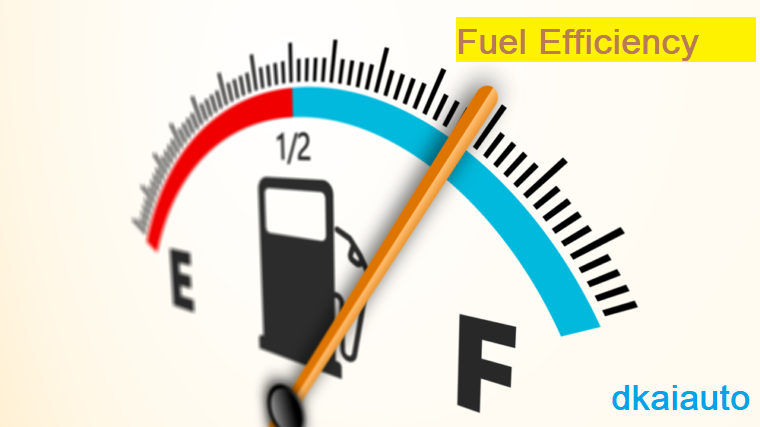
Understanding Fuel Efficiency in Cars: Maximizing Distance per Liter
Fuel efficiency is a crucial aspect of any vehicle, determining how much distance a car can travel per unit of fuel consumed. It’s a key factor for consumers looking to reduce fuel costs and contribute to environmental sustainability. In this detailed guide, we will explore what fuel efficiency is, how it’s measured, and the various factors that influence it.
What is Fuel Efficiency?
Fuel efficiency refers to the ratio of distance traveled by a car to the amount of fuel consumed. It is commonly expressed in:
- Kilometers per liter (km/l) — commonly used in India and many other countries.
- Miles per gallon (mpg) — commonly used in the United States and the UK.
A higher number means the vehicle can travel further on less fuel, indicating better efficiency.
How is Fuel Efficiency Measured?
Fuel efficiency is typically measured through tests conducted under controlled conditions, often by manufacturers, but it can vary based on driving conditions. In many regions, Standardized Testing Cycles are used, such as the WLTP (Worldwide Harmonized Light Vehicles Test Procedure) in Europe or the EPA (Environmental Protection Agency) test in the U.S.
These tests involve driving the vehicle in different scenarios (city, highway, and mixed driving) and calculating the average fuel consumption during those tests.
Factors Influencing Fuel Efficiency
- Engine Size and Type:
- Smaller Engines: Cars with smaller engines, like those with 1.0L or 1.5L engines, typically provide better fuel efficiency because they require less fuel to operate.
- Hybrid and Electric Vehicles: These vehicles use a combination of electric motors and internal combustion engines (ICE) or, in the case of electric vehicles (EVs), rely solely on electricity. Hybrids are generally more fuel-efficient than traditional gasoline or diesel vehicles.
- Turbocharging: Turbocharged engines often provide better efficiency than naturally aspirated engines of the same size by improving engine performance without significantly increasing fuel consumption.
- Vehicle Weight:
- Lighter Cars: The weight of the vehicle significantly affects fuel efficiency. Lighter cars require less energy to move, improving fuel economy.
- Heavy SUVs and Trucks: These larger vehicles tend to consume more fuel because of their heavier weight, requiring more power to move.
- Driving Style:
- Smooth Acceleration and Braking: Sudden accelerations and hard braking increase fuel consumption. Smooth, steady driving is one of the easiest ways to improve fuel efficiency.
- Speed: Driving at high speeds increases air resistance (drag), leading to higher fuel consumption. Maintaining a moderate speed is more fuel-efficient, especially on highways.
- Transmission Type:
- Manual Transmissions: Traditionally, cars with manual transmissions are more fuel-efficient because the driver has more control over engine performance. However, modern automatic transmissions, especially CVTs (continuously variable transmissions), have improved fuel efficiency in recent years.
- Automatic Transmissions: Newer automatics, especially dual-clutch and CVTs, have been designed to offer better fuel economy compared to older automatic systems.
- Tire Pressure:
- Underinflated Tires: When tires are underinflated, they create more rolling resistance, which makes the engine work harder and reduces fuel efficiency. Keeping tires properly inflated is essential for maximizing fuel efficiency.
- Tire Type: Low-rolling-resistance tires, which are designed for better fuel efficiency, are increasingly used in modern vehicles.
- Aerodynamics:
- Vehicle Design: The shape of the car plays a big role in fuel efficiency. Cars with sleek, aerodynamic designs reduce air resistance, improving fuel economy. On the other hand, boxy designs create more drag and require more energy to move at higher speeds.
- Roof Racks and Carriers: Additional accessories like roof racks, even when not in use, increase drag and reduce fuel efficiency. Removing unnecessary accessories can help improve fuel economy.
- Climate Control:
- Air Conditioning: Using the air conditioner increases fuel consumption because it requires energy from the engine to operate. When possible, driving with the windows down at lower speeds or using the vehicle’s ventilation system can be more fuel-efficient.
- Heating: Similar to air conditioning, heating can also use extra fuel. Efficient use of climate control can improve fuel economy.
- Vehicle Maintenance:
- Regular Maintenance: A well-maintained vehicle will operate more efficiently. Regular oil changes, clean air filters, and proper spark plug maintenance help ensure that the engine runs smoothly, which can improve fuel efficiency.
- Fuel System Maintenance: Keeping the fuel injectors clean and ensuring the fuel system is in good condition also plays a key role in fuel efficiency.
- Driving Conditions:
- City vs. Highway Driving: City driving typically involves frequent stops, slower speeds, and higher fuel consumption. On the other hand, highway driving usually results in better fuel efficiency due to consistent speeds and fewer stops.
- Traffic: Stop-and-go traffic can cause increased fuel consumption, as idling and frequent acceleration and braking use more fuel.
How to Improve Fuel Efficiency
- Drive Efficiently: Avoid rapid acceleration, harsh braking, and speeding. Use cruise control on highways to maintain a consistent speed.
- Maintain Proper Tire Pressure: Regularly check and maintain tire pressure to ensure they’re inflated to the optimal level.
- Regular Servicing: Keep your vehicle well-maintained, ensuring timely oil changes, air filter cleaning, and spark plug replacement.
- Limit Load: Avoid overloading your car and remove unnecessary weight, especially heavy items stored in the trunk.
- Use Air Conditioning Wisely: Avoid using air conditioning excessively, especially at lower speeds.
Fuel Efficiency in Hybrid and Electric Cars
Hybrid vehicles combine both an internal combustion engine (ICE) and an electric motor, which allows them to switch between the two power sources for improved fuel efficiency. They also use regenerative braking to recharge the battery, further reducing fuel consumption.
Electric vehicles (EVs) don’t rely on gasoline or diesel, so fuel efficiency in terms of km/l isn’t applicable. However, EVs’ efficiency is often measured in terms of energy consumption (kWh per 100 km). EVs are more efficient than traditional vehicles because electric motors are inherently more efficient than combustion engines.
Conclusion
Fuel efficiency is a key factor in choosing a vehicle, not just for its cost savings but also for its impact on the environment. By understanding the factors that affect fuel efficiency and adopting good driving habits, vehicle owners can maximize their fuel economy, save on fuel costs, and reduce their carbon footprint. Whether you’re driving a compact city car, an SUV, or a hybrid, focusing on efficient operation and maintenance can make a significant difference in the long run.


